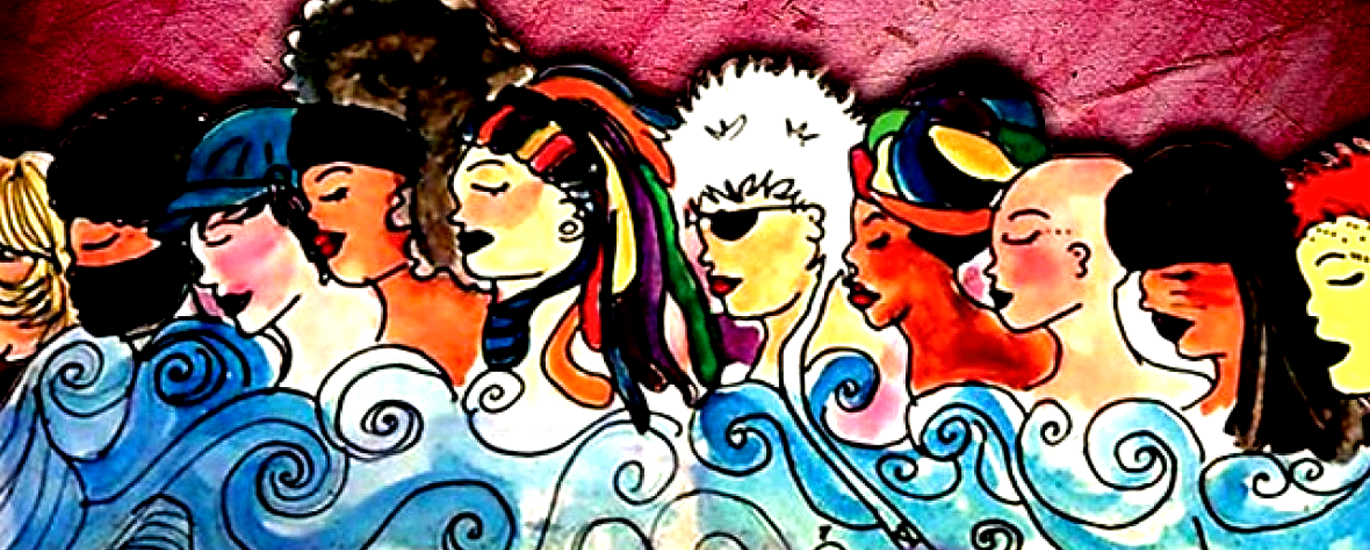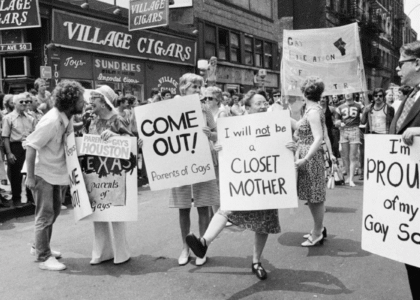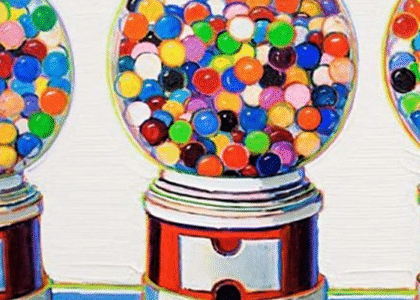“violence against women was used as a strategy of war”
Amy is joined by Dr. Julia Zulver to discuss her book, High-Risk Feminism in Columbia, and learn about feminist organizations striving for justice in Colombia and El Salvador.
Our Guest
Dr. Julia Zulver
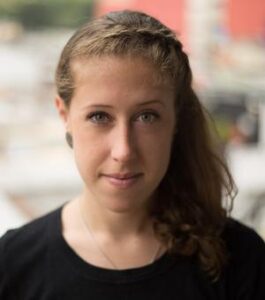
Dr. Julia Zulver is a feminist researcher studying women’s mobilization in communities affected by conflict and violence in Latin America. She is passionate about gender justice, and uses academic research, advocacy, and commentary to draw attention to and support women’s rights.
The Discussion
Amy Allebest: At the beginning of this season, we talked about women in Liberia standing up against a dictator in the midst of a brutal civil war, risking their lives to demand peace. We also talked about Iran, where right now men and women are being killed for their activism in demanding civil rights. All over the world, at various times throughout history, there have been instances of everyday people choosing to put their lives on the line to stand up against patriarchal violence. So what gives them the courage and ability to rise up effectively?
Today we’re going to explore this issue by talking about the violent conflict in Colombia. And to guide us in today’s discussion, I’m excited to welcome to the podcast Dr. Julia Zulver, author of the book High-Risk Feminism in Colombia: Women’s Mobilization in High-Risk Contexts. Welcome, Julia!
Dr. Julia Zulver: Hi, Amy! So lovely to meet you. Thanks for having me.

AA: Thanks so much for being here! I’m so excited to discuss this book. We’ll start off with me reading your professional bio and then I’ll ask you to introduce yourself a little bit more personally. Dr. Julia Zulver is a feminist researcher studying women’s mobilization in communities affected by conflict and violence in Latin America. She is passionate about gender justice and uses academic research, advocacy, and commentary to draw attention to and support women’s rights. Her doctoral thesis at Oxford University was titled High-Risk Feminism in Colombia: Women’s Mobilization in High Risk Contexts, which I mentioned before. This is the book that we’ll be discussing today.
And her master’s degree project similarly focused on feminist mobilization in gang-controlled zones in El Salvador. In these theses, she developed a framework, high-risk feminism, that provides a lens through which to study women’s mobilization, resilience, and agency. It allows for a nuanced reading of women as survivors, activists, and feminists in contexts of high risk. It’s a super important and really interesting study that you’ve done, it sounds like for several years now, and this is what you work on. I’m so excited to learn more, but could you introduce us to yourself first? Tell us where you’re from and about some of the things that make you who you are and bring you to the work that you do.
Dr. Julia Zulver: Absolutely. So, thanks again for having me, I’m Julia Zulver. I’m originally Canadian, although I grew up in New Zealand, in Canada, and I spent some time in the UK doing my studies. But I lived on and off for the last eight years all around Latin America. I did a year of university exchange in Mexico, I was then in Colombia on and off for many years. I worked in El Salvador for my master’s thesis, and I was there last week actually, so I’m excited to chat a little bit more about that. And now I’m based here at the UNAM, the National University of Mexico and Mexico City, where I’m running a three-year project looking at women’s leadership in particular, so what it means to be not only a member of a high risk organization, but actually one of the women leaders of those organizations. That study is going to be more comparative. It’s going to expand on the work I’ve done in El Salvador and Colombia, it includes field work I’m doing in Mexico, it’ll include other work throughout Central America, and so I’m really excited about that.
And how did I come to do the work I do? I’m not sure. I think I’ve always been interested in not just conflict, not just war, not just these post-conflict moments, but how people, and women in particular, choose and decide to contest their violent surroundings. So when things are bleak, when things are violent, when it’s difficult in your everyday life to have a normal life or to feel safe, how do people choose to make these really brave decisions to protect themselves and their communities, even when that doesn’t look like a rational decision at first glance? And that’s something that’s always interested me. It inspires me. The women that I work with are incredible. “Brave” really is the word that comes to mind. And so understanding how that bravery manifests has always been the center of my work. Latin America is a place I first came to to do that exchange in Mexico and I realized as I began to do field work here that there are all of these examples of incredible women doing incredibly brave things. And so I wanted to understand that more in the book project and now also in the research project I’m running out of UNAM.
AA: Well, speaking of brave women, the first question I wanted to ask you actually isn’t the topic of your book. And we’ll spend most of the time talking about Colombia and your book, but I did want to talk about El Salvador a little bit because I have a personal interest in it. When I was doing my master’s degree, a classmate of mine did a big project on gender-based violence in the gangs of El Salvador, specifically in the capital and San Salvador. And I speak Spanish so I helped her translate the interviews that she was doing. She was interviewing her high school students, she’s a high school teacher. And she was interviewing these high school students who had fled El Salvador for asylum in the United States, and they ended up in California in her classroom. And I was translating these interviews that were so incredibly upsetting, the circumstances that they were coming from, and then so inspiring, these girls’ bravery and courage and what they had had to go through. So I wanted to ask you, because I know you have experience and expertise in this area too, if you can tell us a little bit about the situation in El Salvador?
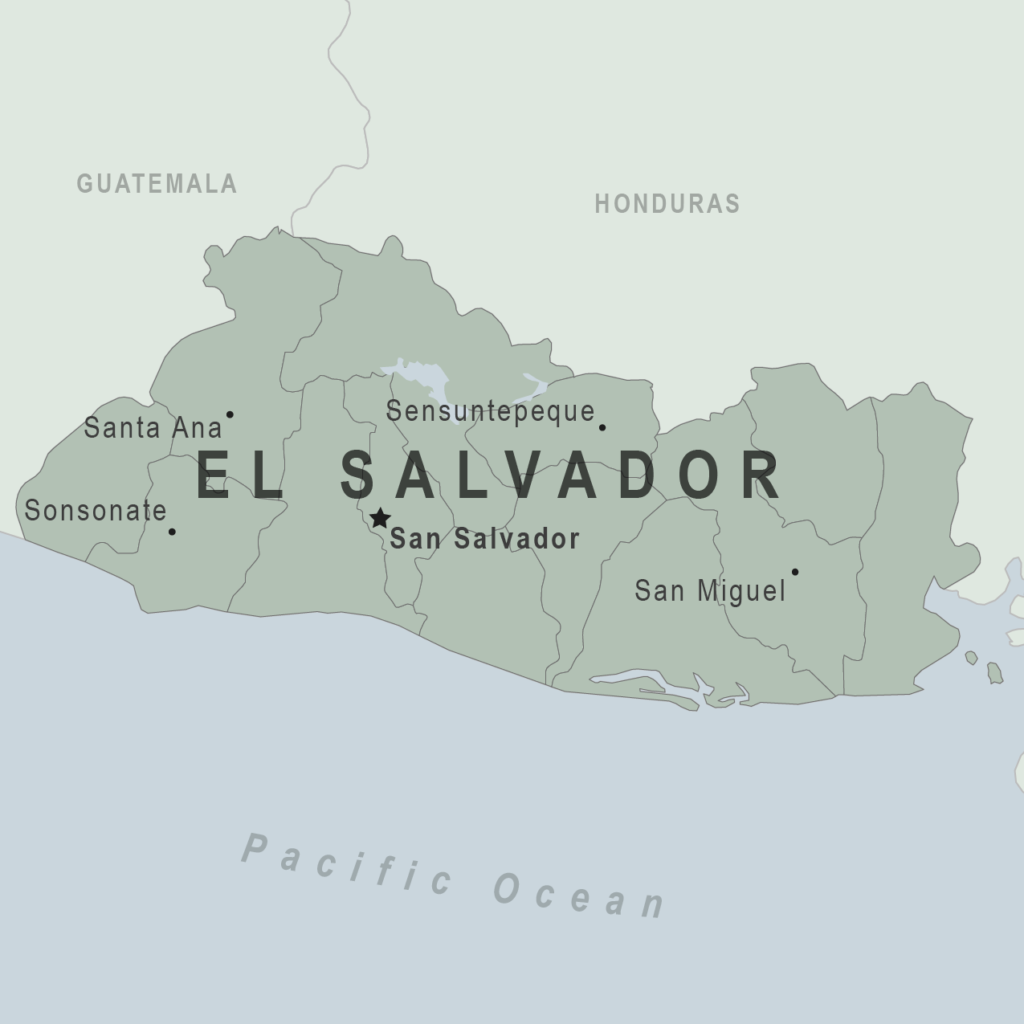
JZ: Absolutely. It was very interesting to go back to San Salvador almost exactly ten years after I had been there doing my research for my master’s thesis in 2013. Particularly because I was able to catch up with some of the people I’d spoken to ten years ago, some of the women from different civil society organizations that I had been interviewing. And a lot has changed. And I think what’s interesting is that ten years ago, these women’s organizations were really talking about this extreme violence in the context of gang control of multiple neighborhoods. Gangs in those neighborhoods want complete control, complete power, they operate in many ways on logics where women living in the territories and communities where they live are seen as property. There is a huge phenomenon of women and girls in particular being chosen or selected for these non-consensual relationships to become a gang member’s girlfriend. There are high, high rates of gender-based violence, including sexual violence. And El Salvador is one of the countries that continues to have the highest rates of femicide in the world.
And now ten years later, we have a different government in power in El Salvador. And what we see is that he’s put in a state of exception that allows the government to put gang members or people who are accused of having connections with gangs into jails. And he has. He and his government have arrested around 60,000 people in the last year. And in theory, this means that a lot of gang members are no longer on the streets and so the neighborhoods that were formerly so, so dangerous because of gang control are no longer as dangerous. And that is true in some senses, and in other senses, the violence and particularly the violent attacks against women have changed. And so speaking with women in human rights organizations and civil society organizations and women’s rights organizations, they’re particularly concerned because the government also has a real problem with these civil society organizations. They try to shut them down, they try to quiet their voices because these organizations are talking about the human rights abuses that are taking place in this state of exception. One of the other things that a lot of the women noted, not only about themselves as human rights defenders, but also about women living in these previously gang-occupied neighborhoods is that now there’s a lot of violence from the police and the army who have a very wide range to put people in jail, knowing that there isn’t due process. Because these people don’t get their time in court right now because it’s an exceptional state. So there are a lot of threats, for example, against women I heard about that “if you don’t do what I want” as the policeman or as the soldier, “we’re going to put you in jail” is the threat. And so there’s that kind of power dynamic going on.
And then also you see different kinds of violence. Women’s organizations are clear that not all of the violence against women in these neighborhoods came from gangs. There are also very high rates of inter-partner violence, of family violence, of domestic violence. And not tackling the root causes of that gender-based violence means that although a lot of gang members are in jail now, although not all that, that isn’t necessarily going to stop what’s happening in terms of the violence that women experience in those neighborhoods. And then the violence or lack of response that they receive when they go to government institutions that are supposed to prevent and respond to that violence. It was just a quick visit to sort of re-educate myself, and I’ll be going back, but what I did see is that patterns of violence have shifted perhaps, but haven’t gone away. But also that even in this very stressful, very repressive context, women’s organizations are continuing to do amazing work. Again, going back to that theme of brave women, they’re doing it as well as they can. They’re trying to protect themselves and their colleagues as best they can, but the work continues. And so that for me is really something to focus on. That resistance to the oppressive and repressive context.
they try to quiet their voices because these organizations are talking about the human rights abuses that are taking place in this state of exception
AA: Wow, what you said about police violence not only reminded me of what we’re going to talk about in Colombia too, where it’s endemic, where you find these attitudes in lots of different organizations, but also one of the things that these students talked about in this study on El Salvador was also sexual violence from teachers at school. It was so common for male teachers to require that their female students sleep with them for good grades. And so in order to do well in school, to provide a good life for themselves, they were finding themselves having to have sexual relationships with these men in power. And so that came to my mind as you said that if it doesn’t address the root, then it just finds another form, right? That attitude of male ownership of women’s bodies.
JZ: Absolutely. And what you’re saying about sexual violence in the school environment checks out. Violence kind of transforms and mutates, but it’s very much based in this patriarchal structure whereby violence is acceptable and that’s because of impunity and corruption. But also frankly, it’s because there isn’t the effort in practice that there is in paper — women’s organizations managed to pass an amazing comprehensive law in 2012 against violence against women, but if it’s not being put into practice it’s hard to see that make real changes in society. But again, my focus in my research, I try to focus both on the context of what’s happening and the patterns of violence that are happening. But also on resistance to that violence, which I think is where we can see those bright spots or moments of hope in terms of enacting change in the long run.
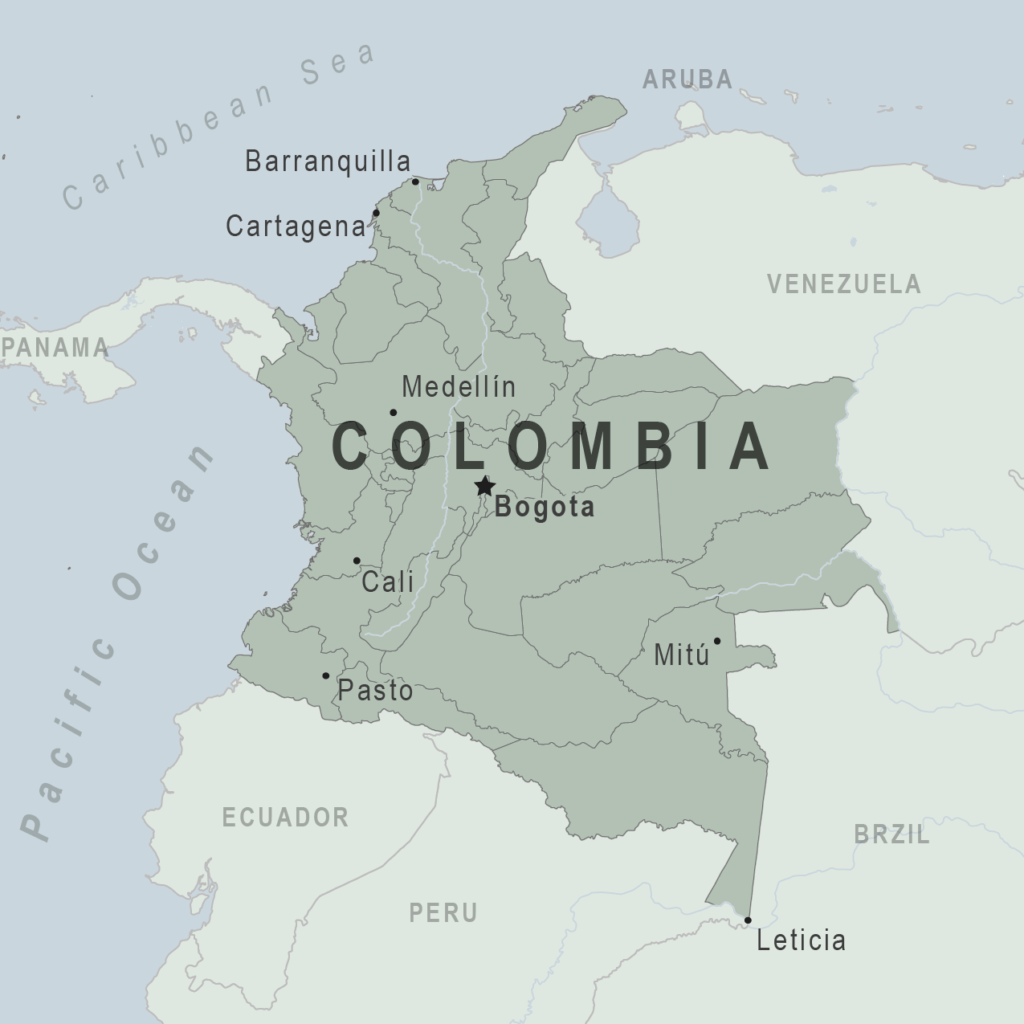
Amy: Wonderful. Well, let’s shift gears, shift locations to Colombia. I’m wondering if you can set the stage for us by talking about the violent context that has existed in Colombia? Maybe most people will be familiar with– if we’re familiar with Colombia, we think of Pablo Escobar or we think of the drug war. So if you can set the scene for us, that would be great.
JZ: Yeah, absolutely. The conflict in Colombia is very long-running and includes those characters you were talking about, but extends quite a long way before then. The Colombian conflict, as we generally refer to it now, it’s one moment of conflict, but the way we usually talk about it is a conflict that began between the government and rural peasants in the 1960s around land reform. Colombia is incredibly unequal in terms of who holds political power, social power, economic power. This is something that remains to date, but in the 1960s it came to a head and different guerrilla organizations began to form in the countryside asking for land redistribution. Organizations that listeners may have heard of like the FARC or the ELN were born with this kind of Marxist-Leninist idea of wealth redistribution, of land redistribution, so that there would be more equality in society.
And there have been different moments in the conflict. Through the 60s and 70s the actors were largely these left-wing groups versus the government. And then the left-wing groups started to try to take away land from large landowners. So landowners started to arm themselves with paramilitary groups who were supported in different ways by the government. So we have these right-wing paramilitary groups who are brutally fighting left-wing communist and socialist groups with the involvement of the government as well. Overlaid on top of that, Colombia does produce coca, which is used to make cocaine, which is transported northwards to North America. And so all of the different parties started to get involved in the drug industry or the drug economy in that way, in some cases to fund themselves, and in other cases just to make money. So you have different actors fighting each other at different moments. Drugs come into it, land very much continues to be part of it.
And one of the heightened moments of the conflict where we see that statistics show huge numbers of homicides, of different kinds of violence, disappearances, sexual violence, physical violence, kidnapping, is in the late 90s into the early 2000s. Between 2005 and 2007, that particular paramilitary group went through a demobilization process. That demobilization process was flawed and a lot of those actors re-armed in different groups: drug trafficking groups, narco groups, groups engaging in the trafficking of illegal minerals and who are still fighting for that social and territorial control with other groups. The conflict has continued.
In 2016, which I know we’re going to talk about, there was a big peace deal signed between the FARC and the government. So that means that the FARC did demobilize. However, different armed groups are continuing to vie for control of territory up until the present day in Colombia. So a really short version: many different groups on the left and the right fighting each other, largely for this dominance in different parts of the country.
AA: One of the themes that you talk about in your book a lot, and that has come up a lot in this season of the podcast too, is that violence affects women in a different way than it affects men. And it affects all people, regardless of gender, really negatively, of course. But because you think about and study women, can you talk about that theme of how this violence has affected women specifically?
JZ: Definitely. Violence impacts women and girls in different ways because of their gender, because of these socially constructed roles that they have in society. And as I was talking about El Salvador before, within a patriarchal system women have less power, generally speaking. Political power, social power, economic power. And so there are some ways that women are directly impacted by violence. In the Colombian conflict, violence against women was used as a strategy of war. The different armed groups in particular would go into different communities and they would use sexual violence, they would use homicidal violence, they would use different kinds of violence to try to control women’s bodies as a part of the territory. Like “we’ve moved into this town, women are part of this town, part of what we now own. And so we can use violence against their bodies to put them into submission.” To put the men into submission as well, if they’re using violence against people’s wives, partners, girlfriends, daughters, family members.
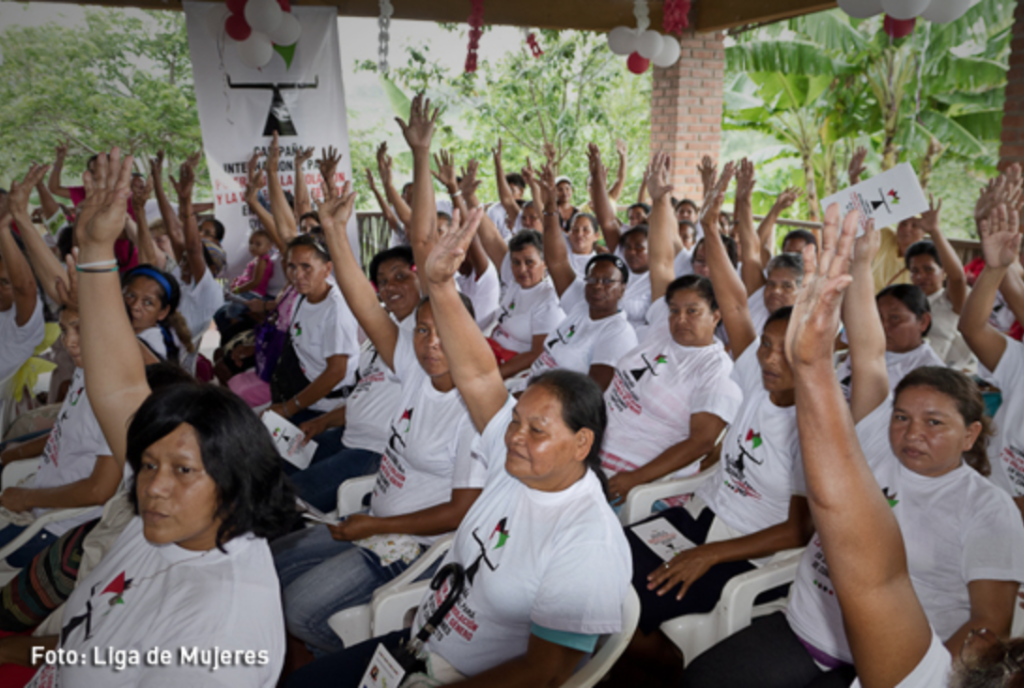
There are also less direct ways that violence in this conflict impacts women. When you have so many men being killed or forcibly displaced, you have women being left alone now as heads of families who have to not only take care of children, but also make money and engage in economic activities that can take care of the family. Women are often put into those roles of having to do the double work of taking care of their families and also protecting them from violence, and doing the cooking, cleaning, educating, housework. So there are ways that violence has directly impacted women in terms of war strategy, but also in many indirect ways, particularly in terms of women who end up being forced to flee their homes and also take care of their families.
AA: One of the parts of the book that I wanted to zoom in on was La Liga de Mujeres Desplazadas, which means displaced women. And that speaks directly to what you were just talking about. I’m imagining when these violent groups move into an area, women and families are going to flee. Especially if men have been killed, then you have a lot of specifically women and children fleeing and going to a different place. Can you talk about these displaced women, what happened to them, and then how they managed to make a place for themselves after they became displaced by the war?
JZ: The women from the Liga de Mujeres Desplazadas were displaced from all over the north coast in Colombia, so all over the Caribbean coast. And they came together in one of the major cities, which is called Cartagena, which some of the listeners may know as a touristy, really beautiful city. But outside of the historical center, it really was this hub for displaced people to come together in a slum known as El Pozón. And the conditions in El Pozón were horrible. It was dangerous, there were other armed groups there, women were experiencing different kinds of vulnerabilities because of extreme weather, because of not having access to houses or resources. And so they began to come together and meet each other and realize as they started to chat that they had all suffered similar kinds of violence that had led to their displacement.
And in one moment, a woman, Patricia Guerrero, showed up in El Pozón and asked these women to come together. She began to talk to them about their situations, not only something uncomfortable that had happened to them or something bad that had happened to them, but actually using women’s rights language and this human rights language. And actually using the language of victims’ rights in Colombia. And so she began to talk to them about how they had these shared experiences and how if they united, they could start to work on projects that might actually make their lives better. That might bring some more safety and some dignity, frankly, to their lives.
And so the women began to share, they started meeting, bringing their friends, more and more of them would come to these meetings. And again, they would learn about these experiences that had happened to them. Not only in terms of something awful, something traumatic, but to frame them in terms of these violences being part of a broader strategy of war. And so as they began to generate this collective identity, this group identity, they decided that what they really wanted and what would really restore dignity in their lives would be to have a home that was their own, a safe home. And so with the help of Patricia Guerrero, they began to look for resources and eventually through her, they found project money through a USAID project to build the city of women, La Ciudad de las Mujeres. And the idea of this city was that it was going to be a place for women and their children to have homes, to be safe, and not to have to worry about these gender-based violences in the context of war. They bought a piece of land outside the city in an area called Turbaco, they learned how to do some of the work themselves, they hired others. They learned how to become builders, to become planners, and they built the city of women, which is around a hundred little houses. Four or five blocks that for the women represents this sign of peaceful resistance, but also a place where they can live their lives despite all of these violences that they faced in the context of the armed conflict.
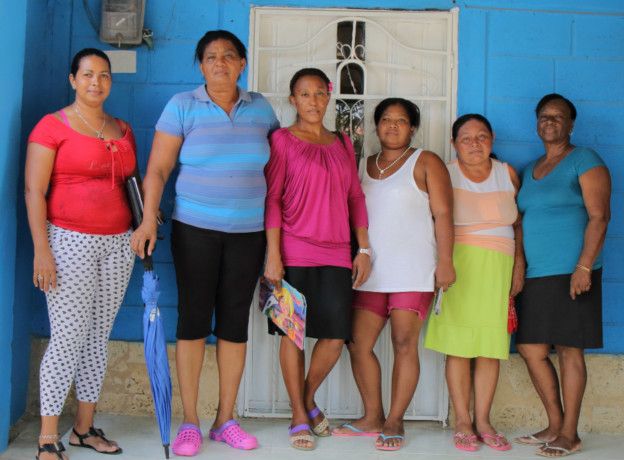
AA: It was really incredible to read about that. And I had a question: if when they’re living in the city of women, if they’re going to be kind of basically left alone, are they going to be safe and protected there? What happens next? And I wondered if you can talk about whether these women were allowed to live peacefully there?
JZ: Sadly, not really. Creating these homes in itself and creating this collective space does make the women feel safer. With that said, they still have been targeted by other armed groups over the years. As they were building the city, they faced stalking attacks, and different paramilitary groups would drive by and threaten them so they wouldn’t build. Because again, these armed groups want complete control of the territories that they occupy. And so having this example of social cohesion of women taking a stand and building a safe place doesn’t fit in with the narrative that they want of being the bosses in town.
And really sadly, even during the construction process one of the women’s husbands who was guarding the brick factory at that point, Don Julio, was murdered. There were cases of stalkings, there were cases of rapes, and there have been ongoing cases of violence and violent actors coming into this small community and trying to use violence against the women and now their kids. So it’s not necessarily a safe place if we’re talking about the ability to prevent or the ability to live in a place without any violence, but it’s still what it represents. And the fact that these women are together and this physical space that belongs to women does make them feel safer given a broader context of armed conflict.
AA: Another thing that I was really struck by in this chapter was not only that the women were able to build their own city, feel relatively safer, but also that they were educating themselves and pushing for structural reform and legal reform. Could you talk about that?
JZ: Absolutely. That’s another one of the strategies that Patricia Guerrero really encouraged for these women. Not only to build this city and to engage in that project, but also to make demands for the state to be responsible for the laws that it has in place. She really encouraged them to learn these different laws, these different constitutional court sentences, and educate themselves legally speaking so that they could start to push for the ability to enjoy those rights. Some of the constitutional court’s sentences, for example, came directly from the United Nations Security Council Resolution 1325, the Women, Peace and Security Agenda, which talks about how women live contexts of war differently. And it talks about how states who’ve signed on need to protect and take care of women. So the Liga engaged in a number of different processes to get the state to make good on its promises. And when it didn’t, for example, they were able to take the state to the Inter-American Commission and then a court on human rights to get special protection measures. And now since 2011, when Colombia put its transitional justice laws into practice, they’ve also applied for individual and collective reparations for the damages that they’ve suffered. So using this language of the state so that the state cannot ignore you as a victim was a really specific and deliberate tactic that they used as part of their mobilization.
AA: Really inspiring. Another subject that I’d love to have you talk about is a different group, and this was a group called Afromupaz. So can you tell us what that stands for and who made up this group, where are they from, and what violence had they endured?
using this language of the state so that the state cannot ignore you as a victim
JZ: Absolutely. So Afromupaz is a shortened name for a name in Spanish, which is Afro Women for Peace. This group of women was displaced from the Pacific coast of Colombia, so largely from the Choco department where we saw another theater of war in Colombia’s armed conflict. These women came to Bogotá, which is the country’s capital city, and really were suffering not only some of the violences and precarities of being displaced women in a new city, which is very different in terms of the climate, in terms of the culture from the Pacific coast, but also because the majority of these women are Afro-Colombian, so they’re Black women. And they face not only gender prejudices, but also racist prejudices.
And in this context, a woman named Maria Eugenia Urrutia came together with some other organizers and began to note these specific needs, not only of the Black community, not only of displaced women, but also of displaced Black women in particular. And so she put together this organization to meet those specific gendered and racialized needs of her community. She herself was a displaced woman. And so Afromupaz was born in the late 90s as she decided that she needed to organize these women so that they could start to come together, to make projects, to make demands on the government, but primarily to seek some kind of safe space within a very hostile new environment for them.

AA: And what kind of pushback did she get from men after she began organizing these Black Colombian women?
JZ: I think it’s the case with all of the cases in the book and all of the cases I’ve worked with that there is pushback from men who see that women participating in this very political way, although it’s within civil society spaces, are transgressing the norms of what women are supposed to do. So, going back to some of that logic, even of what the armed groups see as women’s roles – being in the home, cooking, cleaning, taking care of kids – that’s something that’s fairly widespread in terms of these gender norms in Colombia. And so women coming out and starting to be vocal about their particular needs and their particular demands is not seen as a proper way for women to behave. Maria Eugenia also had a particularly horrific experience when some of the armed groups who were operating in Usme, the part of Bogotá where she had the headquarters for Afromupaz, kidnapped her and took her to a different location outside of the city and used sexual violence against her in an attempt to make her shut up and to make her stop drawing attention to the ongoing violences in Usme. Particularly around child recruitment into narco-trafficking groups, but more broadly as a way to silence this woman who was behaving in a way that women shouldn’t be behaving. However, even after she was able to escape, she was able to leave this horrific kidnapping situation and go through some moments of personal healing, she decided that it was now more important than ever to keep raising her voice and to keep working with the women of Afromupaz. And so, despite another experience of horrific conflicts related to violence, she decided to continue to push this gender justice agenda in her community.
AA: I was so, so inspired by her story. One last question that I wanted to ask you about her… I thought it was a really interesting conversation about feminism, and this is something that has come up over and over again on the podcast. This is something that I’m really hoping that listeners are learning from so many episodes that talk about white feminism and United States-centric white feminism. Can you tell us about the conversation about the definition of “feminist” and how did Maria Eugenia answer that?
JZ: Yeah, that was an interesting conversation. I’m glad I was able to write about it because it was uncomfortable in some ways. As I mentioned earlier, I’m Canadian, I come from a white British background, and she and her organization are really based not only on a particular version of what women’s rights mean, but also what Black women’s rights mean for them. And the intersection of race and gender is so important and really can’t be separated. And so in the conversation you’re referring to, I was asking about her organization and all of the women’s rights work that she was doing. And I said, “Do you consider yourself a feminist?” And she said, and you’ll have to read the book for the exact wording, but to paraphrase, she said, “Well, yeah, we’re feminists, but we’re feminists with the body and face of a woman. We’re not feminists who wear suits,” and kind of looked at me. And I wasn’t wearing a suit, I don’t wear suits generally, particularly on field work, but she really was drawing that distinction that you mentioned. She was looking at me. We were still getting to know each other and saying, “I don’t know what kind of feminism you ascribe to, but if it’s white, liberal, Western feminism, that’s not what we do. That’s not what it means for us.”
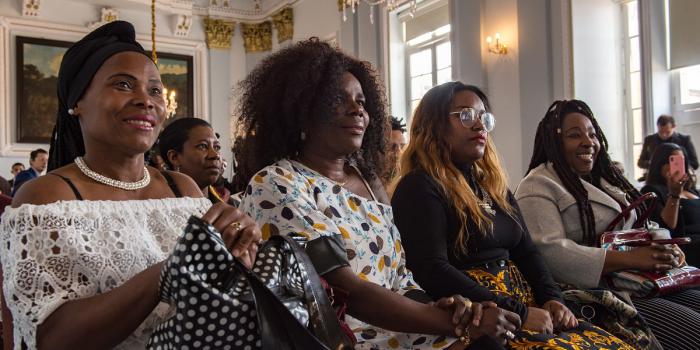
And feminism, as I mentioned, for Afromupaz is at this intersection of being a Black woman from a rural environment and the realities of what that entails, those intersections of geography, of race, of gender, and how those are relational within their communities. And so for her, this kind of “feminism in the face and body of a woman” is deeply located at that cross point of those different forces of oppression that the women she works with have suffered. And that might not look at face value like the kind of feminism that she thought I was talking about. But it was a really humbling and important experience for me to think about using that word “feminism” when in a country like Colombia, it is a loaded term. In the Latin American region more broadly, “feminism” can still be a dirty word, or still imply man-hating, or still imply this transgression of gender norms that I was mentioning before. Whether or not that’s the reality clearly isn’t true, but using that word is a political decision and it has a lot of weight and a lot of meaning involved in it.
And so even calling the book High-Risk Feminism came after a lot of discussions with a lot of different groups who felt differently about me using that descriptor for the work they were doing. Even though for me, their focus on women’s political empowerment, economic empowerment, and the ability to get justice for gender-based crimes is what feminism is in its essence. So, you know, the title was part of a conversation and it is also a provocation as well. It’s something that I’ve discussed widely. For example, last year, when I presented the book in Spanish in Bogotá, when I took it back and did the book launch, that was one of the themes we really spoke about: Is this feminism? Do we want to call it feminism? And so from an academic point of view, I’m happy to make that provocation, happy to inspire the debate, but it is a debate. And so it’s not a word that we can necessarily apply to an organization like Afromupaz or, for example, the Alianza de Mujeres Tejedoras de Vida, who we may talk about in a bit. Or if we don’t, it’s in the conclusion of the book, so a little plug to go and read it. They feel differently about using that term, for example, than Patricia Guerrero does, who very firmly and openly embraces the term. So, it’s a bit of a mixed bag there, but it’s something that needs to be part of a conversation.
AA: Yes, and that’s why I’m so glad you wrote about it, and that you were really transparent about it being an uncomfortable conversation. Because I think that hopefully inspires other people to be willing to feel uncomfortable and have the conversations too, because it is complicated and something that we’re all learning together, hopefully, through these debates and being willing to ask and then listen to what other people have to say about it.
Okay, one more group that I was hoping that you would highlight for us is the community of La Soledad. Could you tell us about La Soledad and how this community was different from the other two that we just talked about, and what you learned from those differences?
JZ: The community of La Soledad is a really interesting one. And La Soledad isn’t the real name. They asked me if I could change the name because the security situation that they are continuing to live in is one that they didn’t want to expose using their names. What was very interesting about this community, which is in La Guajira, a province right next to the Venezuelan border also on the Caribbean coast, is that it’s also home to a big group of displaced women who meet a lot of the basic demographic characteristics that the other organizations I worked with meet or have. They have similar socioeconomic backgrounds, similar ages, similar ethnic and racial makeup. They have a similar background to, for example, the Liga de Mujeres Desplazadas, speaking ethnically and racially. They’ve got similar literacy levels, similar family formations in terms of kids and husbands, or lack of husbands.

But what I found was that there isn’t this high risk feminist organizing in the same way as I found in other parts of the country. And so the question was why, when they’re the same populations of women in similar contexts of violence, why are we not seeing the similar kind of resistance? And what I found through spending time with a loose organization of women there, is that leadership is incredibly important. I’ve spoken about Patricia Guerrero, and I’ve spoken about Maria Eugenia Urrutia in Bogotá, and their leadership has been absolutely key. Their charismatic leadership has been incredibly key in terms of taking women who felt very isolated by the situations of violence that they’ve lived, showing them that they’ve shared these situations, that it’s not an individual thing, that it wasn’t their fault, but that it was part of a broader strategy of war. Helping them to build these collective identities and then use those identities to push for change, or to push for reparation, or to push for a different project.
And what I saw in La Soledad is that even though there was a leader, who was an amazing woman and a really inspiring woman, she didn’t have that vision in the same way. She didn’t have the same way of telling these women, who perhaps in other contexts may have been convince-able when it comes to mobilizing, that it was worth their while to expose themselves to some of the extra risk associated with being part of one of these organizations. She didn’t really have that legal framing, she didn’t know enough about the law or she didn’t know who to be in touch with to use that language of the state, the laws of the state. To push the state institutions to comply with legally what they’re supposed to do, their responsibilities that they have to their citizens. She didn’t really have the ability to do any projects for women or with any kind of gender focus on them. And so what we see is that while there were women who would occasionally meet, spend time together, talk, rely on each other in a very practical way, it didn’t move on to become an organization that really represents this gendered resistance in the same way that the Liga or Afromupaz or even the Alianza do. And so what it shows us in the inverse or through reflection is that this role of the charismatic leader is incredibly important. And if that kind of person doesn’t exist or isn’t on the scene, it’s unlikely that we’re going to see that kind of high-risk collective action.
AA: Yeah, that was fascinating. To me, it spoke to the need for so many different personalities, so many different gifts, and everyone showing up with their gifts and their talents and their interests and their training. Because there’s just such a need for all different people and all different arenas to be able to move things forward.
One last question that I thought was so interesting to think about was, you talk about this kind of gender essentialist idea that women’s special role is in being peacemakers. And the UN even talks about this important role that women should play in peace deals. And you have a really great nuanced conversation about that. I wanted to ask you that question. Is it true that women play an important role in the world in being peacemakers? True, yes or no?
JZ: Yes. Women absolutely do play a crucial role in peace building, in conflicts that extend far beyond the Colombian conflict. And I mentioned earlier in the podcast, the UN security council resolution 1325, which began this Women, Peace, and Security agenda, which has since had 10 resolutions. And what these resolutions note is what we’ve been talking about throughout this podcast, that women and girls suffer in conflict differently because of the social constructions around what it means to be a woman in their society. So the power that they have or don’t have, the roles that they’re supposed to or not fill. And this is 50% of our society, and if these people are suffering conflict in different ways, then in order to rebuild social fabric – which is often the term that’s used in the aftermath of these conflicts – it’s key that women are involved in all stages of peacebuilding. So that’s in the negotiations for peace deals, that’s having their interest represented in peace deals themselves, and that’s being involved in different sectors – government, civil society, different community government spaces – in the aftermath of conflict.
What I would say, and this is what I tried to discuss in the book, is that simply asking or pushing for women to be involved because women have to be involved because of some of these broader global conventions at this point, isn’t really enough. What I’m talking about can be illustrated well in the case of a fourth organization who I discuss in the conclusion of the book, and I foreshadowed earlier, the Alianza de Mujeres Tejedoras de Vida in the very south of the country. I won’t go into too much detail, but they were an organization that mobilized during the early 2000s. There were very similar dynamics of conflict in the sense that they were in a paramilitary controlled area that was fighting with the FARC, they were receiving mass civilian casualties, and this organization was effectively trying to protect women’s rights in this context. They were having to do so fairly clandestinely during the conflict, but up until about 2016-17, they were eventually able to be more public. And after the peace accord was signed, a lot of money and interest came in from the international community to get these women out in their communities, to build peace, to reestablish social fabric.
Women absolutely do play a crucial role in peace building, in conflicts that extend far beyond the Colombian conflict.
And women were doing this, they were making themselves much more public actors doing so, but as the conflict dynamics began to regrow or shift in their territories in the south of the country, we saw that they were receiving this immense backlash for the work that they were doing. So not only have they been targeted during the height of the conflict itself, but now, 2018 onwards, they’re being targeted by armed actors in a similar dynamic perhaps as the way Maria Eugenia was targeted for being too noisy, for doing what women shouldn’t do, for making a fuss. And also as an example to any other social organizations or NGOs or local human rights groups, that if they were to start mobilizing that they would receive the same kind of violence. So making an example out of them.
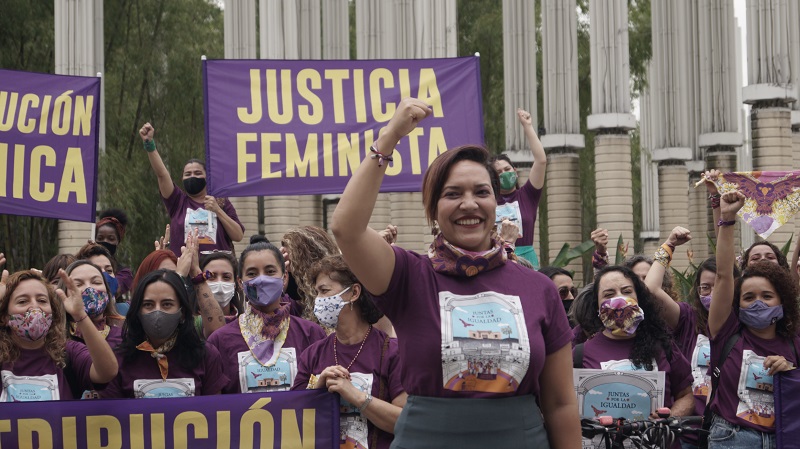
And so what I mean to say with that example, and it’s in much more detail in the book, is that absolutely, women are crucial when it comes to these peacebuilding efforts. But also that they need guarantees of security to actually do that work. A lot of the work that they do is voluntary. It’s unpaid. The international community comes in with funding for six months or a year or two years, and then the funding runs out. And so thinking about the sustainability of asking women to participate in what are very dangerous roles and very dangerous jobs can’t come without some of those guarantees around sustainable funding, around having specific gender protections, which the women are asking for all the time. And having this long term follow-up. You can’t end a 60-year war in one or two years and just assume that everything’s going to be fine. This is a long process. It’s going to take generations in order to really sow those seeds of peace. So thinking about the kind of structural or enabling conditions that can help women to participate in this way is important, not only at the national level with national governments, but also with the international community, who is pushing this very important gender focus onto post-conflict reconstruction. But it needs to know what that actually looks like at the grassroots level as well.
And so I kind of end the book with those cautionary words that absolutely women need to be involved, but assuming that their participation is automatic, or is something that they want to do because of perhaps a maternal peacefulness that they have, is flawed. And they are also facing risks and have very sophisticated diagnoses of what it is that they need to do their job safely. And those voices at the local level need to be heard in other places and sites of power, the national and international levels as well.
AA: Well, this has been such a fascinating conversation. I want to say again how much I learned from your book. I so appreciated the history and the interpretation, and the nuance and sophistication with which you discuss all of these issues. It was so much new information for me and I’m so grateful to have you here today. Thank you so much for illuminating this issue. And again, I tremendously respect the work you’re doing. Thanks so much, Dr. Julia Zulver for being here today.
JZ: Thank you so much for having me! I really appreciate it.
in order to rebuild social fabric…
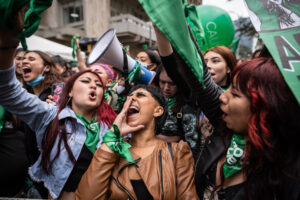
it’s key that women are involved in all stages of peacebuilding.
Listen to the Episode
&
Share your Comments with us below!

